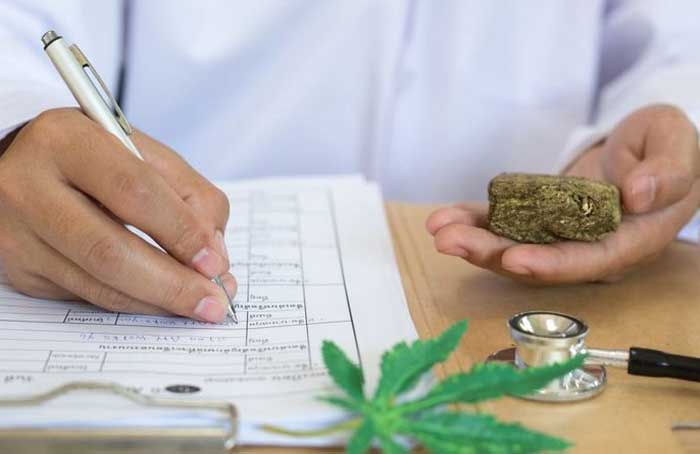Ron Strider
Well-Known Member
Nobody's getting a contact high from the pervasive, pungent smell of marijuana in Vireo Health of New York's growing facility.
To get to the psychoactive compound tetrahydrocannabinol, better known as THC, another compound, tetrahydrocannabinolic acid (THCA), must be heated to produce any effect.
The same is true for cannabidiol, or CBD, the other medicinal substance in marijuana that, in short, alters the way THC affects its user.
Vireo, one of the companies newly permitted in Pennsylvania with plans for a marijuana growing facility in Scranton, offers four varieties of medicine with alternating ratios of THC and CBD named red, yellow, green, blue and indigo. The varieties let users tweak their THC and CBD dosage based on how their bodies react.
Prescribing doctors and regulators expect medical marijuana to be consistent like any other drug. But since it's coming directly from a plant, not a petri dish in a lab, inconsistencies are always a risk.
To control consistency, biologists use a number of measures, starting with how the plant is grown.
Like in New York, Vireo's growing facility in Scranton will have a "mother room" in which trusted plants grow solely to provide clippings for their clones. Mother room planters labeled with identifiers such as "green one" and "indigo 2" help growers separate source plants known to have different ratios of TCH and CBD.
Growers plant the clones in spongy blocks soaked in a nutrient bath where they soon set roots of their own.
When maturing plants begin flowering, they need consistent doses of high-intensity light and then absolute darkness.
"What some people don't realize is when we start turning off the ... (lights), right away you don't see anything, but biochemically in the plant things are changing. Hormones are changing," said Vireo horticulturist Chuck Schmitt. "You start messing with that by adding light later, then you're turning the clock back. The plant gets very confused."
The plant doesn't grow well and it doesn't flower well, he said.
"We won't allow anyone to go in there when the lights are off," he said. "It's that important."
After buds or flowers, the drug-heavy parts of the plant, are dried and processed into oil, Nedo's team measures THC and CBD levels using a process called the high-precision liquid chromatography.
"They are plants. There are differences, so we need to find out the exact purity and potency of everything before we can begin our formulation," said operations Manager Kait Nedo.

News Moderator: Ron Strider 420 MAGAZINE ®
Full Article: Doctors, regulators demand consistency in medical marijuana - News - The Times-Tribune
Author: JON O'CONNELL
Contact: Scranton and Lackawanna County | Contact - The Times-Tribune
Photo Credit: Getty Images
Website: Scranton news, sports, obituaries, and shopping | thetimes-tribune.com | The Times-Tribune
To get to the psychoactive compound tetrahydrocannabinol, better known as THC, another compound, tetrahydrocannabinolic acid (THCA), must be heated to produce any effect.
The same is true for cannabidiol, or CBD, the other medicinal substance in marijuana that, in short, alters the way THC affects its user.
Vireo, one of the companies newly permitted in Pennsylvania with plans for a marijuana growing facility in Scranton, offers four varieties of medicine with alternating ratios of THC and CBD named red, yellow, green, blue and indigo. The varieties let users tweak their THC and CBD dosage based on how their bodies react.
Prescribing doctors and regulators expect medical marijuana to be consistent like any other drug. But since it's coming directly from a plant, not a petri dish in a lab, inconsistencies are always a risk.
To control consistency, biologists use a number of measures, starting with how the plant is grown.
Like in New York, Vireo's growing facility in Scranton will have a "mother room" in which trusted plants grow solely to provide clippings for their clones. Mother room planters labeled with identifiers such as "green one" and "indigo 2" help growers separate source plants known to have different ratios of TCH and CBD.
Growers plant the clones in spongy blocks soaked in a nutrient bath where they soon set roots of their own.
When maturing plants begin flowering, they need consistent doses of high-intensity light and then absolute darkness.
"What some people don't realize is when we start turning off the ... (lights), right away you don't see anything, but biochemically in the plant things are changing. Hormones are changing," said Vireo horticulturist Chuck Schmitt. "You start messing with that by adding light later, then you're turning the clock back. The plant gets very confused."
The plant doesn't grow well and it doesn't flower well, he said.
"We won't allow anyone to go in there when the lights are off," he said. "It's that important."
After buds or flowers, the drug-heavy parts of the plant, are dried and processed into oil, Nedo's team measures THC and CBD levels using a process called the high-precision liquid chromatography.
"They are plants. There are differences, so we need to find out the exact purity and potency of everything before we can begin our formulation," said operations Manager Kait Nedo.

News Moderator: Ron Strider 420 MAGAZINE ®
Full Article: Doctors, regulators demand consistency in medical marijuana - News - The Times-Tribune
Author: JON O'CONNELL
Contact: Scranton and Lackawanna County | Contact - The Times-Tribune
Photo Credit: Getty Images
Website: Scranton news, sports, obituaries, and shopping | thetimes-tribune.com | The Times-Tribune


